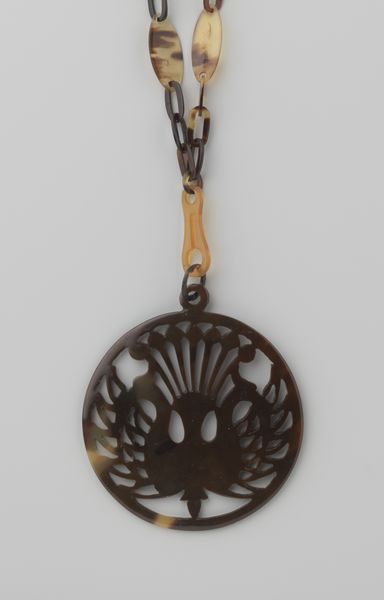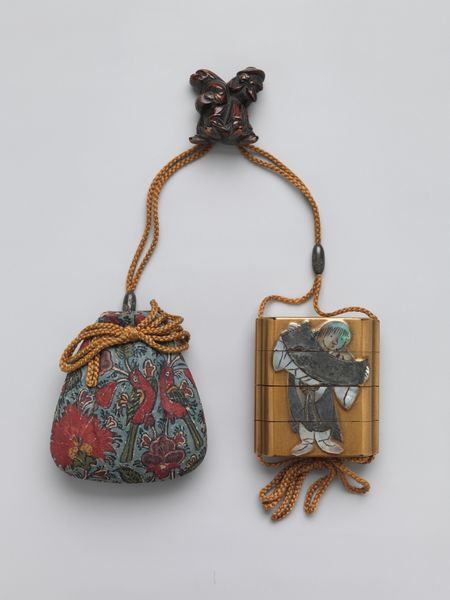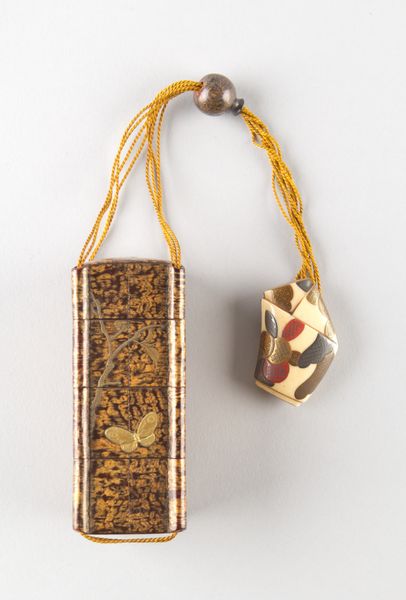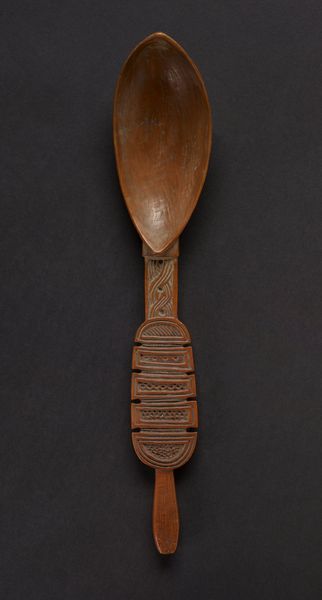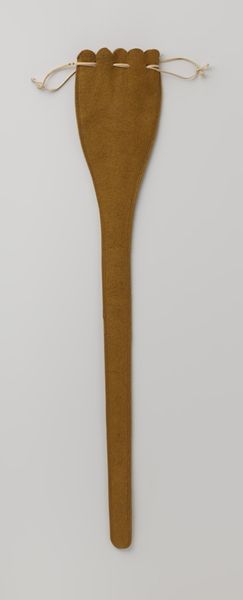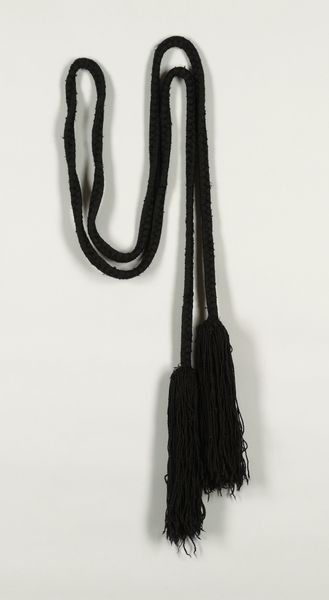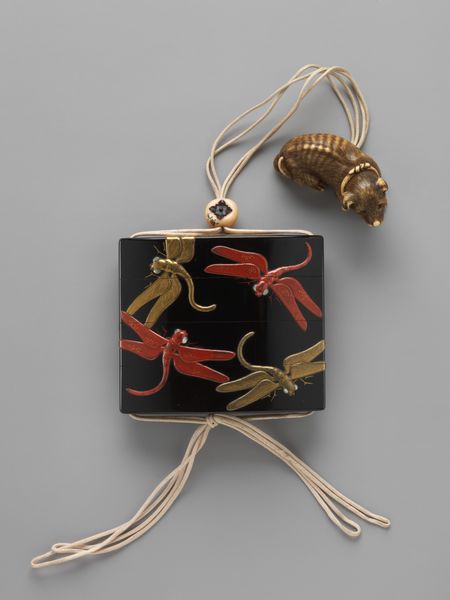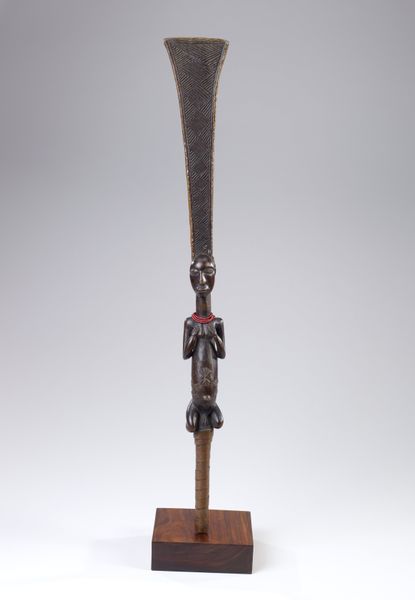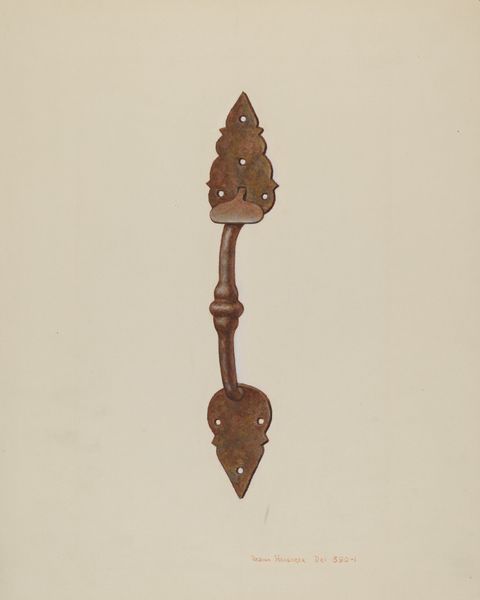
Gesp 'Uil' van houtsnijwerk, bloedkoraal en rode paste aan rood elastisch koord c. 1930 - 1950
0:00
0:00
carving, wood
#
carving
#
folk-art
#
wood
Dimensions: height 11.8 cm, width 6.7 cm, depth 0.8 cm, length 70 cm
Copyright: Rijks Museum: Open Domain
Curator: Isn't that charming? We're looking at a folk art necklace, likely made between 1930 and 1950. The title translates to 'Owl' Pendant in carving wood, blood coral and red paste with red elastic cord. Editor: I'd say "endearing," certainly. The stylized owl form, with its somewhat rudimentary carving and that vibrant red cord, immediately draws the eye. It's folksy but striking. Curator: Absolutely, it possesses the rough hewn quality often found in folk art, where the process of making holds significant importance. The wood is carved and minimally polished, and I am quite intrigued by that unusual elastic cord. What kind of access to materials did the crafter have? And the choices in material must hold relevance in the creation. Editor: Agreed. I immediately see the owl's eyes fashioned from blood coral or the imitation thereof. The owl itself is a symbol deeply steeped in mythology across various cultures – often representing wisdom, mystery, or even prophecy. I find it so compelling to consider how the wearer might imbue this particular rendering with personal significance. Curator: That connection of the symbol to the maker and user makes folk art so engaging. One sees that carving, too, could connect the creator to local material or production, emphasizing skills available at that place and time. The coral, or the substitute used in it, would have implied specific trading routes, skills, or locations, correct? Editor: Precisely. And it speaks volumes. The choice to depict an owl, combined with the raw simplicity of the craftsmanship, makes it almost talismanic, something intended to ward off evil or attract good fortune. That primary red thread linking the pendant to the body reinforces the symbolism. Curator: I'm interested in how this blends both functional use with symbolic work; jewelry is often deeply personal. Examining how material informs use contextualizes its moment of creation. What did the maker and owner want from it? This tells stories about the time it came from as well as how art and life combine. Editor: The more we delve into its imagery and the artist’s hand, the more this small carving reveals. I'm left pondering about the narratives it carried and how its significance transformed throughout its existence. Curator: Agreed; seeing the necklace and exploring material conditions really opens our perspective. It prompts curiosity about the piece and its journey.
Comments
No comments
Be the first to comment and join the conversation on the ultimate creative platform.

